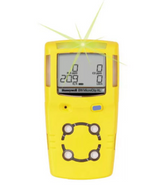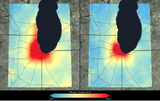Blog
Don't Use Expired Calibration Gas to Test Monitors
Gas produced and put into bottles for bump testing and
calibrating gas monitors has a finite shelf life, and paying attention to that expiration date might save your life. Using expired gas can lead to incorrect calibration of your gas monitor.
Gas concentrations have been known to drop over time. Reactive gases such as hydrogen sulfide react with the material of the cylinder container, and tests have shown some levels to slip from 20 parts per million (ppm) to 6 ppm over a 12-month peri
…
Jun 26th 2015
Confined Space Gas Limits: The Importance of Gas Monitoring in Confined Spaces Pt. 2
The second in a two-part series on confined space gas monitoring:
They say that knowledge is power. This is certainly the case when it comes to safety in confined spaces. It is only after we are aware of the potential dangers of confined spaces that we can recognize a seemingly empty space as containing life-threatening possibilities.
BW Honeywell GasAlert Micro Clip XL 4-Gas Monitor
In the first part of our Gas Monitoring discussion, we talked about Oxygen (O2) levels and Lower Explosi
…
Feb 27th 2015
The Importance of Air Monitoring for Confined Space
The first of a two-part series on confined space gas monitoring:
Unlike a raging river or pounding surf, the dangers of confined spaces are often silent and unseen. Unless a dangerous atmosphere creates a visible cloud of vapor, there isn’t any way for you to see what hazards lurk within a confined space. This is precisely the reason monitoring equipment is so vital to confined space entry.
While it isn’t possible within this format to provide a comprehensive guide for the use of
…
Feb 13th 2015
Gas Monitors for Firefighters - Know Your Smoke
Even professional firefighters may underestimate the danger of smoke from simple fires say experts. Traditionally, firefighters have equated large emissions of hydrogen cyanide (HCN) or carbon monoxide (CO) with hazmat incidents or chemical plant situations. In reality HCN is present in almost every type of call - home, vehicle, dumpster fires, and many more.
Resources such as
gas monitors have traditionally mainly been used by confined space entry teams and hazmat response teams. Bu
…
Jul 3rd 2012





